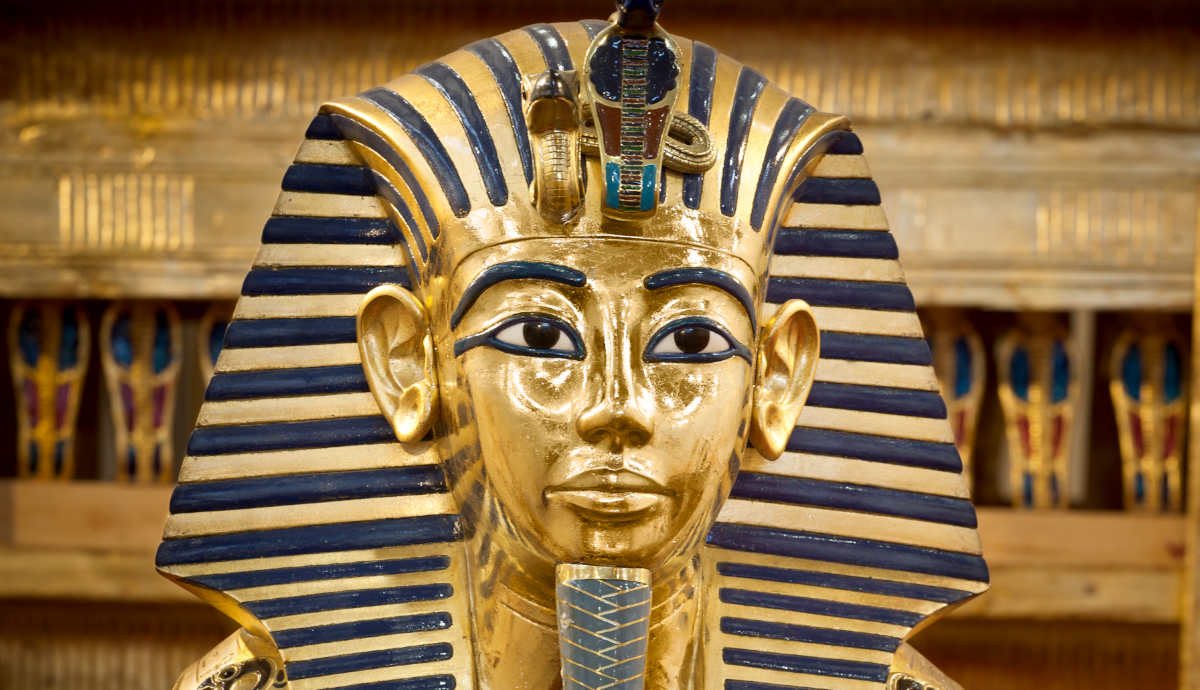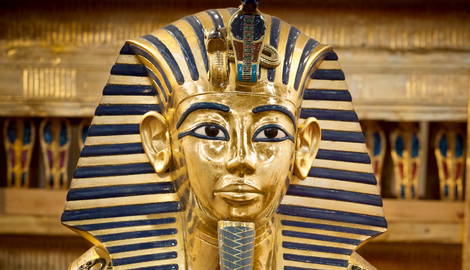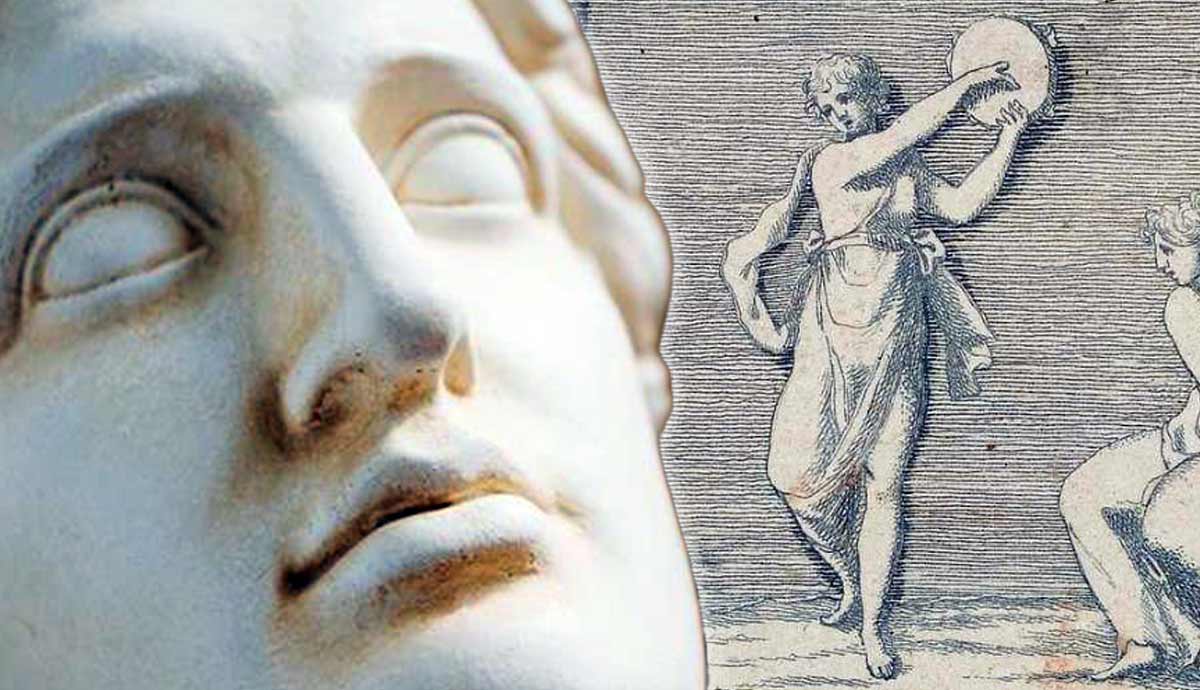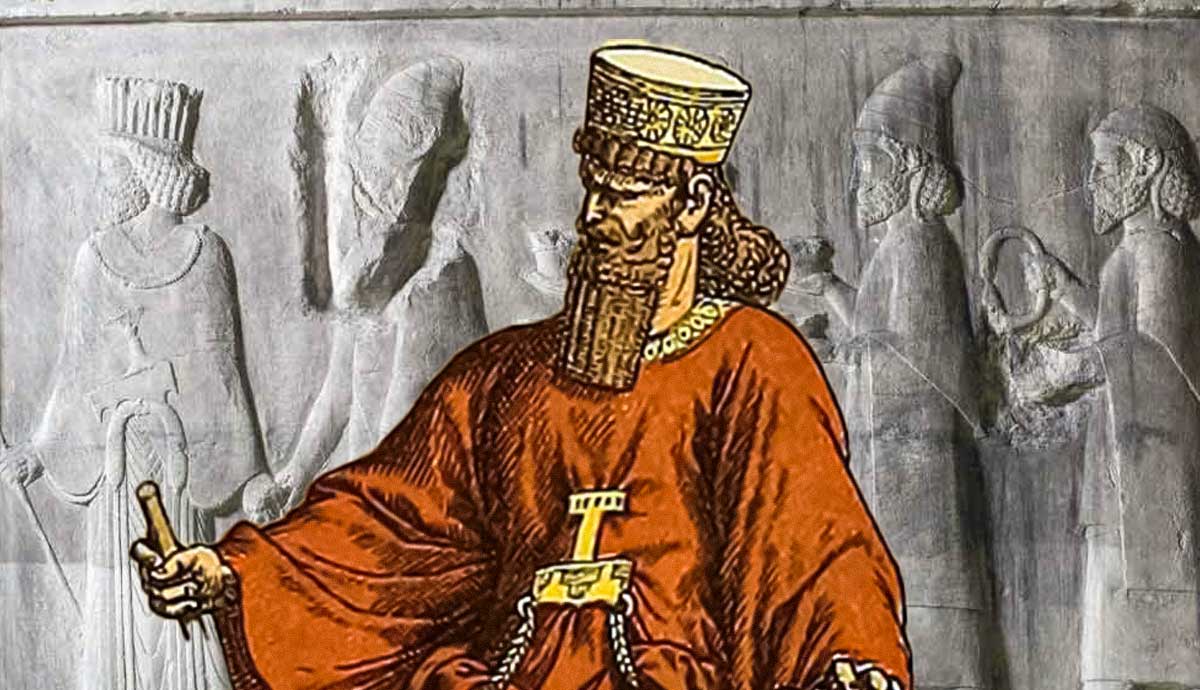
summary
- Tutankhamun restored Amun worship, rejecting his father’s monotheism and reviving traditional Egyptian religion as a child ruler.
- Died young at 18, but became world-famous after the 1922 discovery of his nearly intact tomb.
- Golden treasures and burial mask reflected Egypt’s belief in divine kingship and an eternal afterlife.
- Likely died from malaria and a leg fracture, not foul play, according to modern scientific studies.
- Howard Carter’s discovery made Tutankhamun a global icon, more famous in death than in life.
When Howard Carter cracked open a forgotten tomb in Egypt’s Valley of the Kings in 1922, the world met a golden face that would become immortal. But behind the glittering mask of Tutankhamun was a sickly teenage boy, born into chaos and nearly forgotten forever. The life of King Tut was brief, mysterious, and marked by tragedy. His afterlife turned him into the most famous Pharaoh the world has ever known.
The Mysterious Origins of King Tut

Tutankhamun was born around 1342 BCE, towards the end of Egypt’s 18th Dynasty. He was most likely the son of the infamous heretic Pharaoh Akhenaten, who overthrew Egypt’s traditional religion in favor of the exclusive worship of the solar deity Aten. Tut’s birth name was Tutankhaten—meaning “Living Image of Aten”—to honor his father’s god.
The identity of Tut’s mother, on the other hand, is unknown. Akhenaten’s famous wife Nefertiti, a lesser wife named Kiya, or one of Akhenaten’s sisters have all been suggested as candidates. DNA studies on the subject have suggested his mother’s body is the one known as the KV35 “Younger Lady,” but the body’s identity has remained controversial among scholars.

Tut’s childhood was spent in his father’s holy city at the modern site of Amarna. Because young princes are rarely depicted in 18th Dynasty artwork, only a handful of scattered artifacts and one possible inscription survive from his early years.
The reign of Tut’s father was one of controversy and confusion. The temples of Ancient Egypt were important social and economic institutions, so when Akhenaten withdrew support for them in favor of his new god, all of Egyptian society was affected. Diplomatic records also paint a picture of an empire in decline as Akhenaten neglected foreign affairs to focus on his religious reforms.
Furthermore, analysis of human remains at Amarna suggests that while the royals were languishing, the commoners were undernourished and overworked. Far from a religious paradise, Amarna seems more like a vanity project where Akhenaten pursued his zealotry as his nation withered away.
Tutankhamun’s Body Told a Painful Story

Tut himself faced many challenges. His mummy reveals signs of a cleft lip, a club foot, and possibly anemia, suggesting that he suffered from several health issues from birth. Tut was also beset by tragedy from an early age. All but one of his six sisters probably died before his tenth birthday. Tut’s revered grandmother Tiye did not live much past his 5th birthday. The KV35 “Younger Lady,” a possible candidate for the boy king’s mother, shows catastrophic damage from a fatal accident that probably occurred shortly after Tut was born.
Akhenaten died around 1336 BCE, followed by brief and poorly understood reigns by ephemeral pharaohs. By 1334 BCE, nine-year-old Tut had lost nearly all of his family and was left to inherit a fractured Egypt.
How a Child Pharaoh Tried to Save a Dying Empire

The Egypt that Tutankhamun inherited was torn apart by religious strife, afflicted by social and economic unrest, and faced a complete collapse of its imperial power abroad. Fortunately, Tut was not alone. His third-eldest sister, Ankhesenpaaten, was still alive, and he had two powerful allies to call upon. One was Ay, an experienced statesman who may have been Nefertiti’s father. The other was Horemheb, a younger military man. With Tut being so young, Ay and Horemheb undoubtedly influenced the boy king’s reign.
The new administration’s first concern was to reverse the unpopular and damaging religious reforms of Akhenaten. Under the guidance of Ay and Horemheb, Tut restored royal funding to the old temples, abandoned the city of Amarna, and dropped the “Aten” element of his and his sister’s names in favor of the older god Amun, becoming Tutankhamun and Ankhesenamun as we know them today. Across Egypt, statues and inscriptions of the old gods that Akhenaten had defaced were repaired and restored.

Tomb artwork shows Tutankhamun riding a chariot and defeating enemies, possibly indicating military action. Whether this was literal or symbolic remains debatable. It is likely that Horemheb took up the responsibility of waging war. Horemheb’s tomb in Saqqara shows him offering war captives to the king, and Horemheb’s military titles are strong evidence for him acting as Pharaoh’s stand-in on the battlefield. Most likely, these campaigns were in Asia to restore lands lost due to Akhenaten’s neglect and to confront the rising power of the Hittites, who were challenging Egyptian hegemony in Canaan and Syria.
A Royal Bloodline Doomed to End

Inside Tut’s tomb, archaeologists discovered two mummified fetuses—his daughters—suggesting that he was a father, though neither child survived infancy. Without living children, Tut appears to have made a provision for Horemheb to be his contingency successor.
Horemheb was bestowed the title of Hereditary Prince, which is known to designate the successor. He gave that same title to his own heir Paramessu, who became Ramesses I. However, it is reasonable to assume that this was all just a contingency plan should Tut die without heirs. There is no reason to believe that Tut wasn’t planning on having more children to succeed him.
A Sudden Death—and a Nation Unprepared

Tutankhamun died suddenly when he was just 19 years old. While theories abound, the reality is simple—we still don’t know what ended King Tut’s life so young. Evidence suggests that his death was unexpected. His burial goods were not ready, and his tomb was unfinished. Whether an accident, illness, murder, or another cause, it seems Tut’s death caught Egypt unprepared.
Not only were there no royal children, but Hittite records and other circumstantial evidence suggest that Egypt was at war with the Hittite Empire around the time of his death. It’s likely that Horemheb was commanding this effort in Asia when Tut died and was not present for his death or funeral.
The Rushed Burial of a Forgotten Pharaoh

Ancient Egyptian tradition held that 90 days should transpire between a person’s death and their burial. This allowed time for the burial to be prepared and the body to be mummified. However, the grand tomb that King Tut was planning was not ready, so he was given an alternative tomb in the Valley of the Kings. The most likely scenario is that this was Ay’s tomb. Non-royals, including a couple many believe to be Ay’s parents, were sometimes granted tombs in the Valley, and Ay’s advanced age meant that his tomb was further along. Still, even this was far from finished. Only the burial chamber in Tut’s tomb was decorated, and many of his treasures show signs of being repurposed from other burials.
Tut’s death is estimated to have taken place around the end of the year 1323 BCE. However, analysis shows that Tut’s burial was delayed beyond the traditional 90 days, likely due to succession confusion and the lack of an immediate royal heir.
Power Struggles and a Vanished Queen

Tut’s death set off a cascade of events whose vagueness in the historical record is equal parts frustrating and captivating. After Tut’s death, Queen Ankhesenamun tried to marry a Hittite prince to secure power, but the prince died en route—likely murdered. The widowed Queen soon vanished from history.
It was the aging vizier Ay who would follow the boy king to the throne. Ay appears in Tut’s tomb decorations performing the rituals that each Pharaoh owed to their predecessor. Some speculate that he had a hand in the Hittite prince’s demise, if not Tut’s as well, as he tried to steal the throne for his own.
Horemheb’s position on events is also unclear. While he was probably in Asia when Tut died, there would have been plenty of time for him to return for the funeral. However, Horemheb is completely absent from Tut’s burial goods, which is bizarre for such a powerful official and the man who was probably Tut’s legitimate heir. For whatever reason, Horemheb does not appear to have been present, and he all but disappears from the historical record for several years.
Why Tutankhamun Was Erased from History

Ay would not reign for long. After no more than 4 years, Ay followed his predecessor into the grave, and Horemheb finally ascended to the throne of Egypt. We know precious little about what exactly happened. But Horemheb’s vicious attacks on statues, tombs, and inscriptions mentioning Ay or his allies allude to a serious factional struggle, and possibly a brief civil war. However, it was not in the nature of Egyptian authorities to leave records of things that reflected negatively on them.
This attitude of erasing things that reflected negatively on Horemheb or Egypt writ large was a defining feature of Horemheb’s reign. Akhenaten was long dead, but the scars of his controversial religious reformation remained. Starting in Horemheb’s reign, the Egyptian authorities systematically erased all references to the so-called Amarna period, including not only Akhenaten and Nefertiti, but Tutankhamun and Ay too. Every official inscription was erased, every statue destroyed or recarved, almost every temple torn down. It was one of the most elaborate and successful damnatio memoriae campaigns in Egyptian history.
However, there was one place Horemheb’s destruction never touched: Tut’s tomb. On the contrary, the seal that archaeologists would break in 1922 was put up by Horemheb’s officials, who repaired and resealed the tomb after a break-in during Horemheb’s reign. This contrasts with Horemheb’s treatment of Ay, whose tomb was opened and every image of the man destroyed.
The Forgotten Tomb That Time Buried

Within a few generations, almost no one in Egypt would have remembered the lost boy king. By the time of Cleopatra in the 1st century BCE, it’s probable that no one had even spoken Tut’s name in a thousand years. Ironically, this was Tut’s saving grace.
When Egyptian royal power waned a few centuries after Tut’s death, the tombs of the Valley of the Kings were pillaged by priests and pilferers eager for the gold locked away with the dead pharaohs, By this time, many tombs, including Tut’s, had been covered over by landslides and debris from periodic flooding, but records preserved the locations of those royal burials. While the tombs of Horemheb, Ramesses II, and Amenhotep III were looted, Tutankhamun’s remained untouched, lost to history and protected by obscurity.
The Discovery That Shocked the World

It would take 3,000 years for traces of Tut to re-emerge when scattered references to him were found in his birthplace of Amarna in the late 19th century. At long last, a handful of people spoke Tut’s name again, but Egyptologists at the time knew practically nothing about him other than that he was a short-lived king from the 18th Dynasty.
They concluded that he must have had a tomb in the Valley, but most archaeologists believed it was one of the already discovered but unattributed burials. One archaeologist named Theodore Davies found a small tomb in 1908, which he wrongly attributed to Tut. In his 1912 report, Davies issued one of history’s greatest incorrect predictions: “I fear the Valley of the Tombs is now exhausted.”
Ten years later, excavators working under Howard Carter proved Davies wrong. On November 4th, 1922, a workman found a stone step leading into the ground. What followed was one of the most incredible archaeological discoveries in history. An intact royal tomb full of priceless treasures turned Tut from a virtually unknown minor Pharaoh into a global celebrity.
How the Boy King Became a Global Icon

Sensational media coverage followed every step of the discovery. It took years to catalog and extract everything from the tomb, and the treasures that poured out captivated the world. The most famous of these was Tut’s iconic golden burial mask.
For modern audiences, Tut’s tomb offers tantalizing insights into the wealth and secrets of a bygone age. But we should not forget that it served a powerful emotional and spiritual role for its creators and inhabitants. The Egyptians believed that the tomb and all of its treasures would preserve the dead for the next life. In that regard, Tut’s tomb has done its job a million times over. Most of the world now recognizes his face. And, after thousands of years of silence, billions of people know his name.










